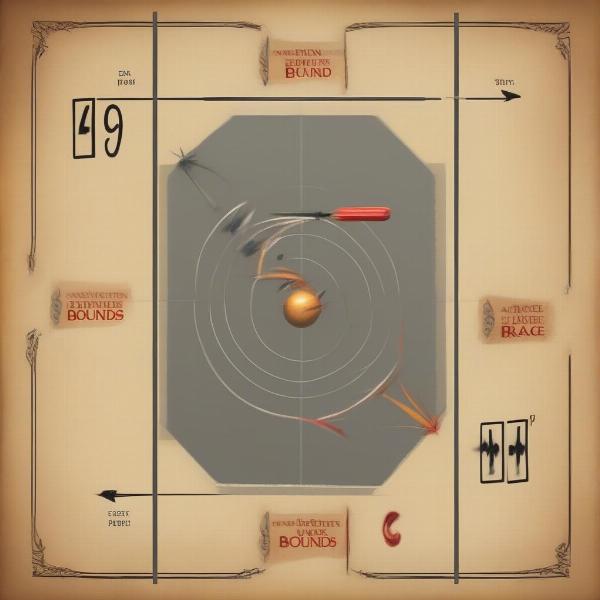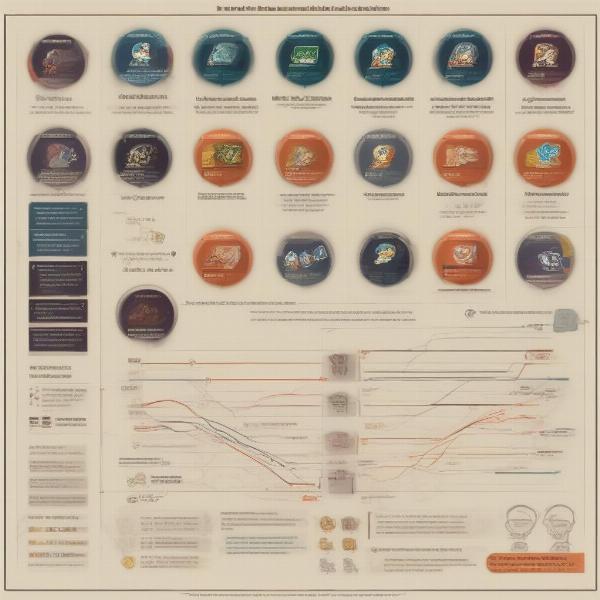In this comprehensive guide, we’ll delve into the exciting world of “In Between,” a simple yet engaging card game perfect for casual gatherings. Learning how to play In Between is a breeze, making it ideal for families and friends of all ages. This guide will cover everything from basic rules to advanced strategies, ensuring you’re ready to become an In Between master in no time.
Understanding the Basics of In Between
In Between, often referred to as “Between,” is a card game centered around guessing where the value of a drawn card falls relative to two previously revealed cards. The game relies on probability and a bit of luck, making it both strategic and exciting. You’ll need a standard deck of 52 playing cards and at least two players to get started. Ace is generally considered low (1) unless otherwise specified.
What You’ll Need to Play In Between
- A standard deck of 52 playing cards
- At least two players (more players are welcome!)
- A flat surface to play on
Before we jump into the gameplay, let’s clarify the card values for those unfamiliar: Ace (1), 2, 3, 4, 5, 6, 7, 8, 9, 10, Jack (11), Queen (12), King (13).
How to Play In Between: A Step-by-Step Guide
-
Shuffle the Deck: Begin by thoroughly shuffling the deck of cards to ensure a fair game.
-
Deal the Cards: Deal two cards face up on the playing surface. These are your “boundary” cards. For example, you might have a 5 and a 9.
-
The Guess: Players then take turns guessing whether the next card (drawn from the deck) will fall “In Between” the two boundary cards, or “Out of Bounds.” In our example, a guess of “In Between” would mean the next card would need to have a value between 5 and 9 (6, 7, or 8). An “Out of Bounds” guess would mean the card is either below 5 or above 9.
-
Drawing the Card: After each player makes their guess, the next card is drawn from the deck and revealed.
-
Determining the Winner: If the player’s guess is correct, they win the round. If incorrect, they lose. It is important to note that the values of the cards do matter in this game.
-
Repeating the Process: The winner keeps the drawn card, and the process is repeated with the high card being replaced, starting with the boundary cards already placed, and the new card drawn. This cycle continues until the deck is exhausted. The player with the most cards at the end is declared the winner.
Advanced Strategies for In Between
While luck plays a role, skilled players can enhance their chances of winning by considering certain strategies. For instance, observing the pattern of cards drawn can sometimes provide clues regarding the probability of drawing a high or low card.
Remember, the goal is not just to guess correctly but to carefully assess the probability of the next card based on the cards already played. Experienced players will adjust their strategy based on the remaining cards, becoming more cautious or bolder depending on the situation. This adaptable approach is key to mastering the game.
 Illustrating the basic rules of In Between card game
Illustrating the basic rules of In Between card game
Frequently Asked Questions about In Between
What happens if the next card is the same value as one of the boundary cards?
If the drawn card matches the value of one of the boundary cards, the guess of “In Between” is considered incorrect, and the guess of “Out of Bounds” is considered correct.
Can I play In Between with more than two players?
Absolutely! The more players, the merrier. You can easily adapt the game for larger groups.
What are some variations of In Between?
Some variations allow players to bet multiple cards on their guesses, adding another layer of strategy and risk. Other variations might change the scoring system. Experiment and find the rules that best suit your group!
Can I use a different number of cards as boundary cards?
While the standard game uses two boundary cards, you could experiment with three or more for a more challenging game. The more cards, the lower your chances of success in each round.
What if I run out of cards in the deck?
If you run out of cards before one player has significantly more cards than others, you can reshuffle the used cards and continue playing.
 Advanced Strategies in In Between card game
Advanced Strategies in In Between card game
In Between and Other Card Games: Similarities and Differences
While In Between is unique, it shares some similarities with other card games. For example, much like playing [game of tens card game], In Between requires strategic thinking and a bit of luck, and the game is simple to learn but can provide hours of enjoyment. If you enjoy two-player games, check out our article on [2 person playing card games], or for something a bit different, consider trying [pusheen the cat card game]. It’s worth noting that the complexity of these games varies greatly. For instance, while In Between is relatively straightforward, others, like [one piece trading card game romance dawn], might involve complex rules and strategic depth. Finally, the simple ruleset of Kemps also shows a similar design principle found in In Between, so take a look at [how to play kemps the card game] for another fun card game option.
 Variations of In Between Card Game
Variations of In Between Card Game
Conclusion: Mastering the Art of In Between
Learning how to play In Between is a fun and easy way to spend time with family and friends. By understanding the basic rules and incorporating some of the advanced strategies discussed, you can significantly improve your chances of winning. Remember, practice makes perfect! So gather your friends, shuffle the deck, and get ready to enjoy the thrill of guessing “In Between.”
So, what are you waiting for? Grab a deck of cards and start playing In Between today! Share your experiences and strategies in the comments below!

